|
Architects Rethink Recycling
by Tracy Ostroff
Contributing Editor
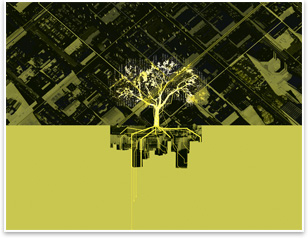 Summary: Frustrated with program requirements for a design competition for new recycling kiosks in Denver, Studio H:T Architects strayed from the guidelines to chart a new method of recycled waste collection. The Boulder, Colo.,-based firm envisions a “single stream” recycling system that would eliminate the intermediate step of collection by creating a city-wide infrastructure through which recyclables are delivered to sorting facilities. Their methods draw from the efficiencies of the recycling facility itself and from nature: electromagnets and a flexible membrane would mimic the smooth digestive muscle movement known as peristalsis to move the waste long distances, and even uphill. Summary: Frustrated with program requirements for a design competition for new recycling kiosks in Denver, Studio H:T Architects strayed from the guidelines to chart a new method of recycled waste collection. The Boulder, Colo.,-based firm envisions a “single stream” recycling system that would eliminate the intermediate step of collection by creating a city-wide infrastructure through which recyclables are delivered to sorting facilities. Their methods draw from the efficiencies of the recycling facility itself and from nature: electromagnets and a flexible membrane would mimic the smooth digestive muscle movement known as peristalsis to move the waste long distances, and even uphill.
How do you … ask questions that promote more efficient systems?
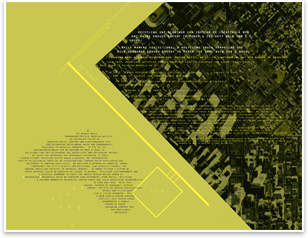 The architects, always on the lookout for interesting competitions and ways to stretch their creative spirit, decided to enter a contest sponsored by the AIA Denver Committee on the Environment, in conjunction with the Downtown Denver Business Improvement District, which asked designers to create recycling kiosks that would be “timeless iconic pieces of civic infrastructure.” The new recycling kiosks would be fabricated and pepper major city streets in an effort to bump up recycling in this already environmentally conscious metropolis. “It’s a way for us to toss some constraints to the wind and to be a little bit more free in ways you can’t on client projects,” says Studio H:T Principal Brad Tomacek, AIA. He and Principal Christopher Herr, AIA, say it is a way for the studio to regenerate and reinvigorate their practice. The architects, always on the lookout for interesting competitions and ways to stretch their creative spirit, decided to enter a contest sponsored by the AIA Denver Committee on the Environment, in conjunction with the Downtown Denver Business Improvement District, which asked designers to create recycling kiosks that would be “timeless iconic pieces of civic infrastructure.” The new recycling kiosks would be fabricated and pepper major city streets in an effort to bump up recycling in this already environmentally conscious metropolis. “It’s a way for us to toss some constraints to the wind and to be a little bit more free in ways you can’t on client projects,” says Studio H:T Principal Brad Tomacek, AIA. He and Principal Christopher Herr, AIA, say it is a way for the studio to regenerate and reinvigorate their practice.
To hash ideas, the firm charretted, Herr and Tomacek say, for a few days, and “went retro to show process,” throwing up about 20 models of wrappers to redress the recycling bins. As they began their design process, they asked themselves, “What motivates an individual to recycle?” They say they found themselves restyling the recycling bin and creating new versions on an old theme.
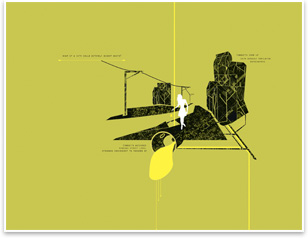 Frustrated by the competition limitations, they embarked on more intensive research and calculations. They discovered, according to the project description, that the current solid waste collection system is so inefficient that it harms the environment, rather than helps it. They report on their Web site that, “according to the Mississippi Department of Environmental Quality, recycling one aluminum can instead of creating the same amount of new aluminum saves enough energy to power a 100-watt bulb for 3.5 hours.” That’s the good news. But now the bad news: “While making collections, a recycling truck traveling one mile consumes enough energy to power the same bulb for six days.” Frustrated by the competition limitations, they embarked on more intensive research and calculations. They discovered, according to the project description, that the current solid waste collection system is so inefficient that it harms the environment, rather than helps it. They report on their Web site that, “according to the Mississippi Department of Environmental Quality, recycling one aluminum can instead of creating the same amount of new aluminum saves enough energy to power a 100-watt bulb for 3.5 hours.” That’s the good news. But now the bad news: “While making collections, a recycling truck traveling one mile consumes enough energy to power the same bulb for six days.”
Dynamic conversation
It became clear to the architects that the recycling system as we know it in America, with bins scattered about cities and containers at curbsides, does not promote the environmental benefits that we associate with throwing plastic, paper, and other goods in these receptacles. From there, the architect’s scheme took a different turn.
They investigated the very nature of recycling and the inherent inefficiencies of the current infrastructure. The staff, which put its other work on hold while they debated and hashed the kiosk project, engaged in a dynamic conversation that resulted in thinking about “an underground system akin to sewers or water distribution propulsion to collect waste.” They note on their Web site: “At that point our focus shifted away from the receptacle and to a greater infrastructure of solid waste collection.”
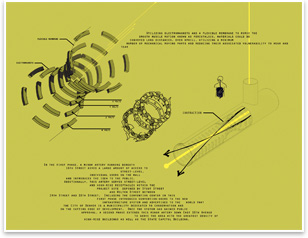 Nature as model Nature as model
The architects changed their question from “What motivates an individual to recycle?” to “How can the activity of recycling achieve greater alignment between the methods and the intention?” Soon, it was clear to them that “we were on our own little island,” Herr says.
Noting that people are lazy, the design team wanted to bring an ease to the process. They noted the efficiency of the recycling facility itself, with its conveyor belts, sorters, and electromagnets that “sift and categorize recyclables which are subsequently sold back to material producers.” They saw the great economic benefit for the City of Denver, and thought it would be great if recycling could be flushed away like sewage. Looking to nature and its regenerative properties for inspiration, and coupling that with the lessons learned from the recycling facility, they drew on the concept of using electromagnets and a flexible membrane system that would mimic the “smooth muscle motion known as peristalsis to convey materials long distances, even uphill, using a minimum number of mechanical moving parts.” With this system, the architects note, “powered by renewably sourced energy, the City of Denver could actively digest and filter waste like a living organism.” Taking the idea even further, “with a more sophisticated sorting facility, this system could accommodate a single stream of waste including compost and non-recyclable materials.”
The system would serve the urban areas and other areas of major activity through a principal artery of the highest volume corridors. The architects note that the artery would follow a railroad right of way and take a minimally invasive route to the recycling facility. As the system gained more users and public approval, additional minor arteries could be added. Other aspects of the scheme include a “collector,” which would provide both land access service and circulation within residential neighborhoods and commercial industrial areas; “local-horizontal/local-vertical” to connect the system to high-rise offices and residential buildings; and “street-level receptacles” that would replace the recycling kiosks and inefficient vehicles.
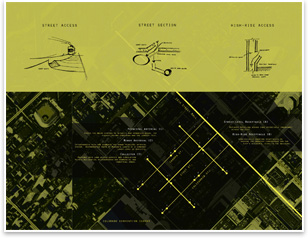 The architects say they could see their plans working in new communities. They’re excited about where their ideas could go and sent the proposal to energy officials in Gov. Bill Ritter’s office. The feedback was that staff found the project interesting, but still a little too abstract to take it further at this point. Still, they are eager to see the possibilities and appreciated the special recognition they received from the AIA Denver COTE for their competition entry. They also look forward to receiving an R+D Award from Architect magazine next month. The architects say they could see their plans working in new communities. They’re excited about where their ideas could go and sent the proposal to energy officials in Gov. Bill Ritter’s office. The feedback was that staff found the project interesting, but still a little too abstract to take it further at this point. Still, they are eager to see the possibilities and appreciated the special recognition they received from the AIA Denver COTE for their competition entry. They also look forward to receiving an R+D Award from Architect magazine next month.
Living organisms
Herr and Tomacek offer kudos to the winning design, an egg-like receptacle that they say has interesting metaphorical ideas about recycling. Still, they note that “while the creation of a recycling kiosk is a valuable and worthwhile exercise, it became apparent that we were no longer content to address the smaller issue of the singular kiosk, but rather sought to solve the larger problem of systematic inefficiency. Although our proposal may not ultimately prove to be the right answer, we feel that it is the result of asking the right questions.” |



